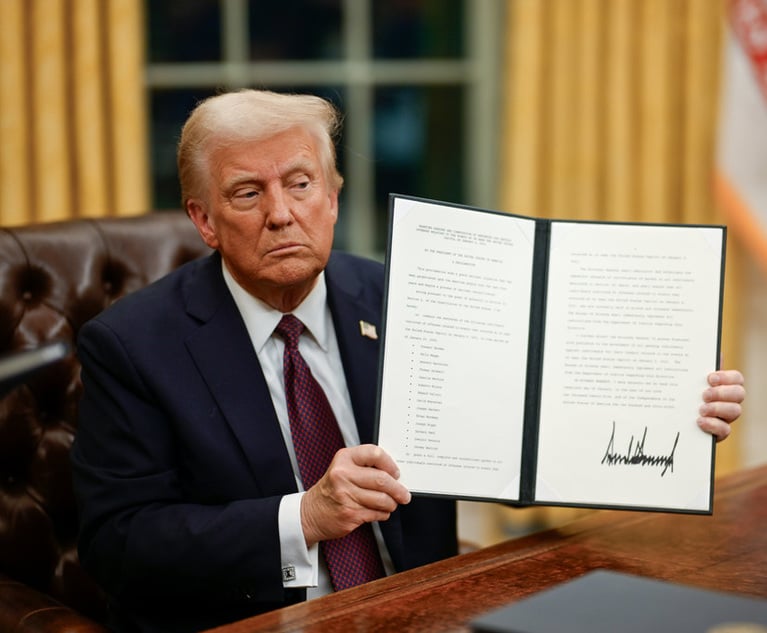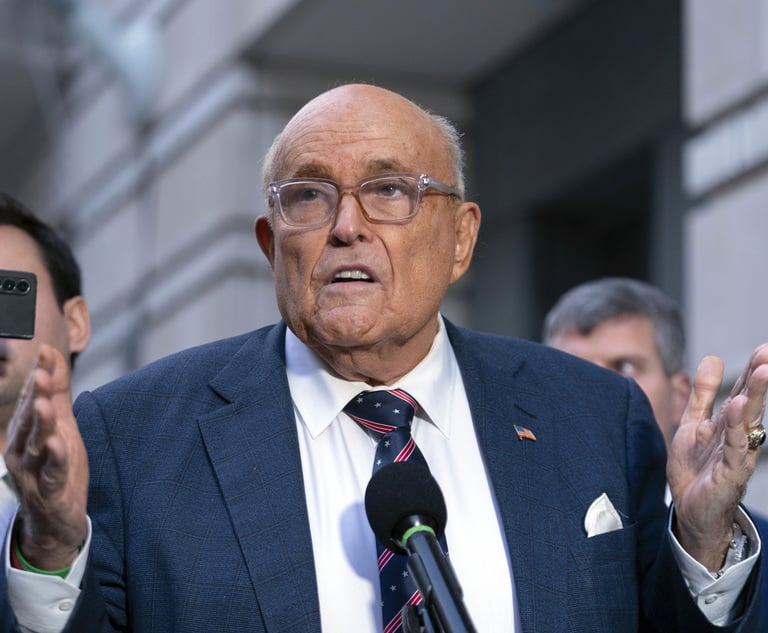 James Chou, left, and Kelly Schneid, right, of Moritt Hock & Hamroff. Courtesy photos
James Chou, left, and Kelly Schneid, right, of Moritt Hock & Hamroff. Courtesy photos CPLR 3212(b): A Provision That Allows Ambush at Summary Judgment
This article starts with a discussion on the current CPLR 3212(b)'s legislative history and proceeds to an examination of how courts have attempted to harmonize CPLR 3212(b) with CPLR 3101(d)(1)(i) and other procedural rules intended to ensure timely and orderly process, including Commercial Division Rule 13(c), which governs expert disclosure in the commercial part, and CPLR 3126, which addresses the court's discretion in imposing sanctions for violations of a discovery order.
November 27, 2023 at 10:00 AM
8 minute read
Consider the following: You have been litigating a case in New York State Supreme Court. You and your adversary have engaged in initial motion practice at the pleadings stage, suffered through discovery, spent far too many hours in meet-and-confers and sought court intervention on various contested issues. Now, with fact discovery complete, the parties agree that expert discovery is unnecessary. Thus, neither side makes an expert disclosure under CPLR 3101(d)(1)(i) by the court's deadline, and no expert discovery occurs.
After the note of issue is filed, the parties proceed to make their respective summary judgment motions. But when you review your adversary's papers, much to your chagrin, you discover that your adversary has submitted an expert affidavit opining on key issues. Naturally, you cry foul, declare that the expert submission is improper and accuse your adversary of bad faith gamesmanship. You reach out to the court, urging it to reject the expert testimony as out of turn. But to your dismay, the court accepts the submission, noting that it is bound by the CPLR to consider it even though the parties had opted not to make expert disclosures. How can this be?
This content has been archived. It is available through our partners, LexisNexis® and Bloomberg Law.
To view this content, please continue to their sites.
Not a Lexis Subscriber?
Subscribe Now
Not a Bloomberg Law Subscriber?
Subscribe Now
NOT FOR REPRINT
© 2025 ALM Global, LLC, All Rights Reserved. Request academic re-use from www.copyright.com. All other uses, submit a request to [email protected]. For more information visit Asset & Logo Licensing.
You Might Like
View All

Rudy Giuliani's Story Arc in the Southern District of New York


You’re Sure You’ve Looked? The Use of Jackson Affidavits and Efforts to Locate Discovery Materials
8 minute readLaw Firms Mentioned
Trending Stories
Who Got The Work
J. Brugh Lower of Gibbons has entered an appearance for industrial equipment supplier Devco Corporation in a pending trademark infringement lawsuit. The suit, accusing the defendant of selling knock-off Graco products, was filed Dec. 18 in New Jersey District Court by Rivkin Radler on behalf of Graco Inc. and Graco Minnesota. The case, assigned to U.S. District Judge Zahid N. Quraishi, is 3:24-cv-11294, Graco Inc. et al v. Devco Corporation.
Who Got The Work
Rebecca Maller-Stein and Kent A. Yalowitz of Arnold & Porter Kaye Scholer have entered their appearances for Hanaco Venture Capital and its executives, Lior Prosor and David Frankel, in a pending securities lawsuit. The action, filed on Dec. 24 in New York Southern District Court by Zell, Aron & Co. on behalf of Goldeneye Advisors, accuses the defendants of negligently and fraudulently managing the plaintiff's $1 million investment. The case, assigned to U.S. District Judge Vernon S. Broderick, is 1:24-cv-09918, Goldeneye Advisors, LLC v. Hanaco Venture Capital, Ltd. et al.
Who Got The Work
Attorneys from A&O Shearman has stepped in as defense counsel for Toronto-Dominion Bank and other defendants in a pending securities class action. The suit, filed Dec. 11 in New York Southern District Court by Bleichmar Fonti & Auld, accuses the defendants of concealing the bank's 'pervasive' deficiencies in regards to its compliance with the Bank Secrecy Act and the quality of its anti-money laundering controls. The case, assigned to U.S. District Judge Arun Subramanian, is 1:24-cv-09445, Gonzalez v. The Toronto-Dominion Bank et al.
Who Got The Work
Crown Castle International, a Pennsylvania company providing shared communications infrastructure, has turned to Luke D. Wolf of Gordon Rees Scully Mansukhani to fend off a pending breach-of-contract lawsuit. The court action, filed Nov. 25 in Michigan Eastern District Court by Hooper Hathaway PC on behalf of The Town Residences LLC, accuses Crown Castle of failing to transfer approximately $30,000 in utility payments from T-Mobile in breach of a roof-top lease and assignment agreement. The case, assigned to U.S. District Judge Susan K. Declercq, is 2:24-cv-13131, The Town Residences LLC v. T-Mobile US, Inc. et al.
Who Got The Work
Wilfred P. Coronato and Daniel M. Schwartz of McCarter & English have stepped in as defense counsel to Electrolux Home Products Inc. in a pending product liability lawsuit. The court action, filed Nov. 26 in New York Eastern District Court by Poulos Lopiccolo PC and Nagel Rice LLP on behalf of David Stern, alleges that the defendant's refrigerators’ drawers and shelving repeatedly break and fall apart within months after purchase. The case, assigned to U.S. District Judge Joan M. Azrack, is 2:24-cv-08204, Stern v. Electrolux Home Products, Inc.
Featured Firms
Law Offices of Gary Martin Hays & Associates, P.C.
(470) 294-1674
Law Offices of Mark E. Salomone
(857) 444-6468
Smith & Hassler
(713) 739-1250






